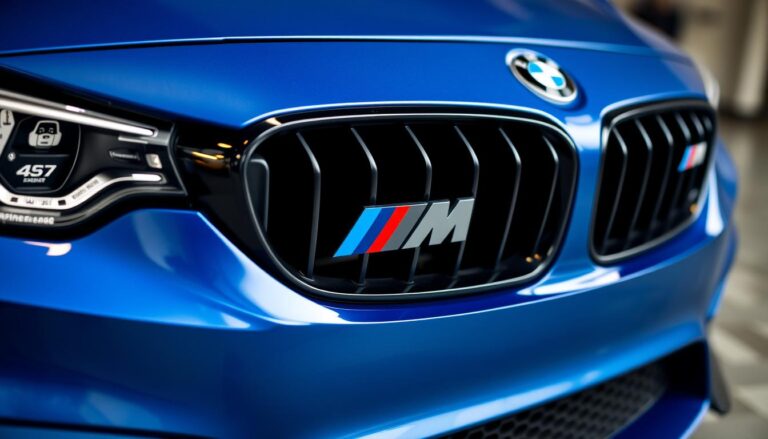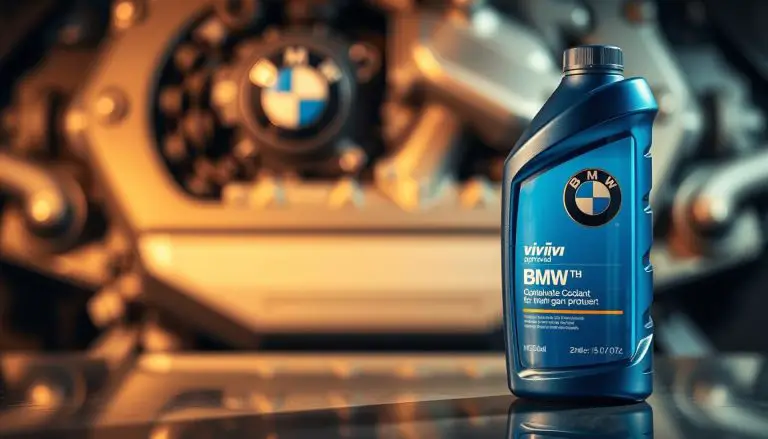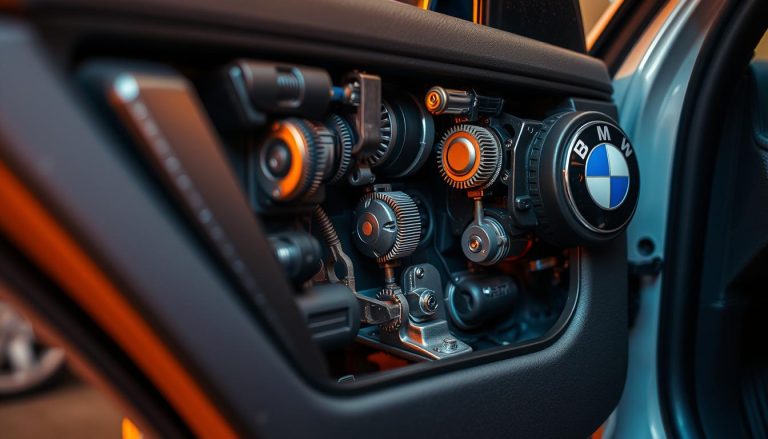The BMW N46 engine, celebrated for its superior performance and efficiency, is not immune to mechanical malfunctions over time.
Issues with this engine span from minor annoyances to critical failures necessitating swift intervention. For any BMW owner or aficionado, grasping these problems is imperative for preserving their vehicle’s integrity.
This comprehensive guide is dedicated to elucidating the troubleshooting and repair of prevalent N46 engine issues. By adhering to this manual, readers will acquire the expertise to detect and possibly rectify problems, thus ensuring their vehicle’s optimal performance and longevity.
Key Takeaways
- Understanding common issues with the BMW N46 engine
- Step-by-step guide to troubleshooting
- Repair strategies for common problems
- Tips for maintaining engine health
- Importance of regular maintenance
Understanding the BMW N46 Engine
The BMW N46 engine embodies a sophisticated amalgamation of engineering prowess and historical significance. It has been instrumental in BMW’s quest to harmonize performance with efficiency.
Technical Specifications and Design
The BMW N46 engine, a 2.0-liter inline-four cylinder, boasts a double VANOS system for enhanced performance. Its design philosophy emphasizes a lightweight construction, aimed at augmenting fuel efficiency.
Common Applications in BMW Models
Utilized across a spectrum of BMW models, including the 318i, 320i, and X3, the N46 engine’s versatility has cemented its status as a preferred choice for multiple generations of these vehicles.
Evolution from Previous Engines
The N46 engine’s lineage traces back to earlier BMW engines, integrating accumulated knowledge and technological progress. It marks a notable advancement in the realms of efficiency and performance.
| Specification | Detail |
|---|---|
| Engine Type | Inline-4 Cylinder |
| Displacement | 2.0 Liters |
| Performance Features | Double VANOS System |

Most Common BMW N46 Engine Problems
The N46 engine, employed in a range of BMW models, is known for specific mechanical maladies that necessitate prompt attention. Grasping these prevalent issues is imperative for preserving the engine’s efficacy and durability.
Typical Symptoms of Engine Malfunction
Malfunction in the BMW N46 engine manifests through a variety of symptoms, encompassing diminished performance, anomalous sounds, and dashboard warning lights. Predominant afflictions include timing chain malfunctions, VANOS system failures, and oil leaks.
| Symptom | Possible Cause |
|---|---|
| Unusual Noises | Timing Chain Issues |
| Performance Decrease | VANOS System Failure |
| Oil Leaks | Valve Cover Gasket Damage |
Warning Signs You Shouldn’t Ignore
Indicators of potential N46 engine problems include the illumination of the check engine light, anomalous engine sounds, and visible oil leaks. Neglecting these signs can precipitate more critical issues, including engine failure.
Initial Diagnostic Approach
The diagnostic process for N46 engine issues commences with a visual examination and the deployment of diagnostic tools. Utilizing an OBD-II scanner to retrieve error codes offers crucial insights into the engine’s state, facilitating the identification of the underlying cause of the problem.

Diagnosing and Fixing Timing Chain Issues
Diagnosing timing chain malfunctions in BMW N46 engines is imperative for preserving engine performance and averting potential damage. Such issues can manifest as suboptimal engine performance, diminished fuel efficiency, and, in extreme cases, catastrophic engine failure.
Symptoms of Timing Chain Failure
Recognizing the symptoms of timing chain failure is the initial step towards diagnosing the problem. Common indicators include:
- Rattling noises emanating from the engine
- Poor engine performance
- Activation of the check engine light
Step-by-Step Diagnostic Process
A comprehensive diagnostic process necessitates both visual inspection techniques and the application of diagnostic tools.
Visual Inspection Methods
Visual inspections can expose signs of wear or damage on the timing chain and its ancillary components.
Using Diagnostic Tools
Diagnostic tools, such as OBD scanners, offer detailed insights into engine performance, aiding in the identification of timing chain malfunctions.
Repair Options and Associated Costs
The cost of rectifying timing chain issues can fluctuate significantly, contingent upon the severity of the damage and the chosen repair methodology.
| Repair Option | Cost Range |
|---|---|
| Timing Chain Replacement | $500-$1,500 |
| Tensioner Replacement | $200-$800 |
| Complete Engine Overhaul | $3,000-$6,000 |
Grasping the symptoms and diagnostic procedures for timing chain malfunctions empowers BMW N46 engine proprietors to address issues promptly, potentially mitigating the financial burden of expensive repairs.
Troubleshooting VANOS System Failures
The BMW N46 engine’s performance is significantly enhanced by its VANOS system, but like any complex technology, it’s not immune to failure. The VANOS system, or Variable Nockenwellen Steuerung, is a technology that adjusts the timing of the engine’s valves to optimize performance and efficiency.
Understanding VANOS Functionality
The VANOS system operates by adjusting the camshaft timing in response to engine speed and load, ensuring optimal valve timing under various driving conditions. This results in improved power delivery, reduced emissions, and enhanced fuel efficiency.
Common VANOS Failure Symptoms
When the VANOS system fails, it can manifest through several symptoms, including:
- Reduced engine performance
- Poor idle quality
- Increased fuel consumption
- Error codes related to camshaft timing
Diagnostic Steps for VANOS Issues
Diagnosing VANOS system failures involves a combination of error code interpretation and physical inspection techniques.
Error Code Interpretation
Using an OBD-II scanner, technicians can retrieve error codes that may indicate issues with the VANOS system, such as camshaft timing discrepancies.
Physical Inspection Techniques
A physical inspection may involve checking the VANOS system’s hydraulic components, electrical connectors, and solenoids for signs of wear or damage.
VANOS Repair and Replacement Options
Repairing or replacing the VANOS system can vary in complexity and cost, depending on the nature of the failure. Options range from cleaning or replacing faulty components to installing a new VANOS unit.
| Repair Option | Complexity | Cost |
|---|---|---|
| Cleaning VANOS Components | Low | $200-$500 |
| Replacing VANOS Unit | High | $1,000-$2,500 |
As illustrated, understanding and addressing VANOS system failures is crucial for maintaining the performance and efficiency of the BMW N46 engine.
Resolving Oil Leaks and Consumption Problems
Ensuring the integrity of your BMW N46 engine necessitates prompt attention to oil-related maladies. Oil leaks and elevated consumption rates can precipitate a decline in engine performance, potentially culminating in severe damage if not rectified.
Identifying Common Oil Leak Sources
Typical culprits behind oil leaks in the BMW N46 engine include the valve cover gasket and the oil filter housing seal. A diligent inspection of these components can facilitate the early detection of leaks.
Addressing Excessive Oil Consumption
Excessive oil consumption often stems from worn piston rings or other internal engine malfunctions. Regular assessments of oil levels and consumption patterns are imperative for diagnosing such issues.
Step-by-Step Valve Cover Gasket Replacement
The process of replacing the valve cover gasket entails the removal of the valve cover, thorough cleaning of the area, and the installation of a new gasket. This intricate procedure may necessitate the expertise of a professional.
| Step | Description |
|---|---|
| 1 | Remove the valve cover |
| 2 | Clean the valve cover area |
| 3 | Install a new gasket |
Oil Filter Housing Seal Repair
The oil filter housing seal’s degradation over time can result in leaks. The repair entails the removal of the oil filter housing, inspection for damage, and the installation of a new seal.
Cooling System Failures and Solutions
Cooling system malfunctions in the BMW N46 engine can precipitate severe engine damage if not rectified expeditiously. The cooling system, an intricate network, encompasses the water pump, thermostat, radiator, hoses, and coolant. These components collaborate to maintain engine temperature equilibrium.
Water Pump and Thermostat Troubleshooting
The water pump and thermostat are pivotal to the cooling system’s functionality. A malfunctioning water pump may exhibit coolant leakage or unusual noises, whereas a defective thermostat can induce engine overheating or suboptimal cooling. To diagnose, scrutinize the water pump for coolant leaks and assess the thermostat’s functionality by gauging the temperature at the radiator hoses.
Radiator and Hose Inspection
Examine the radiator and hoses for evidence of wear, leaks, or damage. A compromised radiator can result in coolant leakage, whereas fractured hoses may lead to coolant leaks or impede its flow. Employ a pressure test kit to pinpoint leaks in the radiator and hoses.
| Component | Common Issues | Diagnostic Steps |
|---|---|---|
| Water Pump | Leaks, Noise | Inspect for leaks, Check bearing noise |
| Thermostat | Stuck closed or open | Check temperature at radiator hoses |
| Radiator | Leaks, Corrosion | Pressure test, Inspect for corrosion |
| Hoses | Cracks, Leaks | Inspect visually, Pressure test |
Diagnostic Steps for Overheating Issues
To diagnose overheating, verify the coolant level, inspect the radiator and hoses, and test the thermostat and water pump. Utilize a scan tool to monitor engine temperature and identify any trouble codes pertinent to the cooling system.
Coolant Leak Detection and Repair
Coolant leaks can be detected via a pressure test kit or by visually inspecting the cooling system for signs of leakage. Upon identifying a leak, repair or replace the affected component, and replenish the coolant as required.
Electrical and Sensor Troubleshooting Guide
Addressing electrical and sensor malfunctions in the BMW N46 engine is imperative for preserving its operational integrity and longevity. The N46 engine’s functionality heavily depends on its electrical circuitry and sensor network. Any anomalies in these systems can precipitate a decline in performance and potentially necessitate expensive repairs.
Common Sensor Failures in N46 Engines
The BMW N46 engine employs a multitude of sensors to oversee and regulate its functioning. Predominant sensor malfunctions encompass issues with the crankshaft position sensor, camshaft position sensor, and oxygen sensor. Such failures can manifest as suboptimal engine performance, diminished fuel efficiency, and, in extreme cases, an inability to start the engine.
Using OBD Diagnostic Tools Effectively
OBD (On-Board Diagnostics) diagnostic tools are indispensable for pinpointing electrical and sensor malfunctions in the N46 engine. By interfacing an OBD-II scanner, one can access trouble codes stored within the engine control unit (ECU), offering crucial information regarding the problem’s origin.
Resolving Check Engine Light Issues
The check engine light serves as a pivotal indicator of engine electrical and sensor system malfunctions. To rectify check engine light issues, one must first employ OBD diagnostic tools to diagnose the problem, then address the underlying cause, whether it be a faulty sensor, wiring defect, or another related issue.
Wiring Harness Inspection and Repair
The wiring harness is a pivotal element of the electrical system, and any damage or deterioration can lead to a plethora of problems. Conducting a thorough inspection of the wiring harness for signs of wear, damage, or corrosion, and undertaking necessary repairs or replacements, is a critical step in troubleshooting electrical malfunctions in the N46 engine.
Conclusion: Maintaining Your BMW N46 Engine
Ensuring the longevity of your BMW N46 engine necessitates a commitment to regular maintenance. A comprehensive understanding of the engine’s technical specifications and prevalent issues is paramount. This knowledge empowers you to implement proactive measures to preserve its performance.
Adherence to a meticulous maintenance regimen is imperative for the engine’s optimal functioning. This regimen includes routine oil changes, thorough inspections of the cooling system, and vigilant monitoring for signs indicative of timing chain or VANOS system malfunctions. Such diligence is critical in averting the financial burden of costly repairs and ensuring the vehicle’s consistent performance.
Proactive maintenance of your BMW N46 engine can be facilitated by consulting with a professional mechanic or referring to your owner’s manual. These resources provide invaluable guidance on preventing common engine problems. By doing so, you can safeguard the integrity and performance of your vehicle, extending its lifespan and enhancing your driving experience.
FAQ
What are the most common problems with the BMW N46 engine?
The BMW N46 engine is plagued by several maladies, including timing chain malfunctions, VANOS system failures, oil leaks, and cooling system breakdowns. These issues can significantly impact the engine’s performance and longevity.
How do I diagnose timing chain issues in my BMW N46 engine?
To diagnose timing chain problems, one must employ a systematic approach. This entails a visual inspection and the utilization of diagnostic tools to detect symptoms such as engine misfires or unusual rattling noises.
What are the symptoms of VANOS failure in the BMW N46 engine?
VANOS system failure manifests through several symptoms, including rough idling, diminished engine performance, and specific error codes associated with the VANOS system. These indicators signal a need for immediate attention to prevent further damage.
How can I troubleshoot oil leaks in my BMW N46 engine?
Identifying and resolving oil leaks in the BMW N46 engine requires a methodical approach. It involves pinpointing common leak sources, such as the valve cover gasket and oil filter housing seal, and addressing excessive oil consumption.
What are the steps to diagnose cooling system failures in the BMW N46 engine?
Diagnosing cooling system failures necessitates a thorough examination of the water pump and thermostat. It also involves inspecting the radiator and hoses for damage and detecting any coolant leaks. These steps are crucial for maintaining the engine’s temperature and preventing overheating.
How do I use OBD diagnostic tools to troubleshoot electrical and sensor issues?
Utilizing OBD diagnostic tools effectively requires a deep understanding of error codes and sensor data. It involves monitoring sensor performance and identifying common failures within the N46 engine’s electrical system. This knowledge is essential for diagnosing and resolving electrical and sensor-related issues.
What are the options for repairing or replacing the VANOS system?
Repairing or replacing the VANOS system presents several options, ranging from replacing individual faulty components to replacing the entire system. The cost of these repairs can vary significantly, depending on the extent of the necessary work.
How can I prevent common BMW N46 engine problems through maintenance?
Preventing common BMW N46 engine problems is achievable through regular maintenance. This includes routine oil changes, thorough inspections, and prompt addressing of any issues that arise. Such proactive measures are vital for ensuring the engine’s reliability and longevity.


